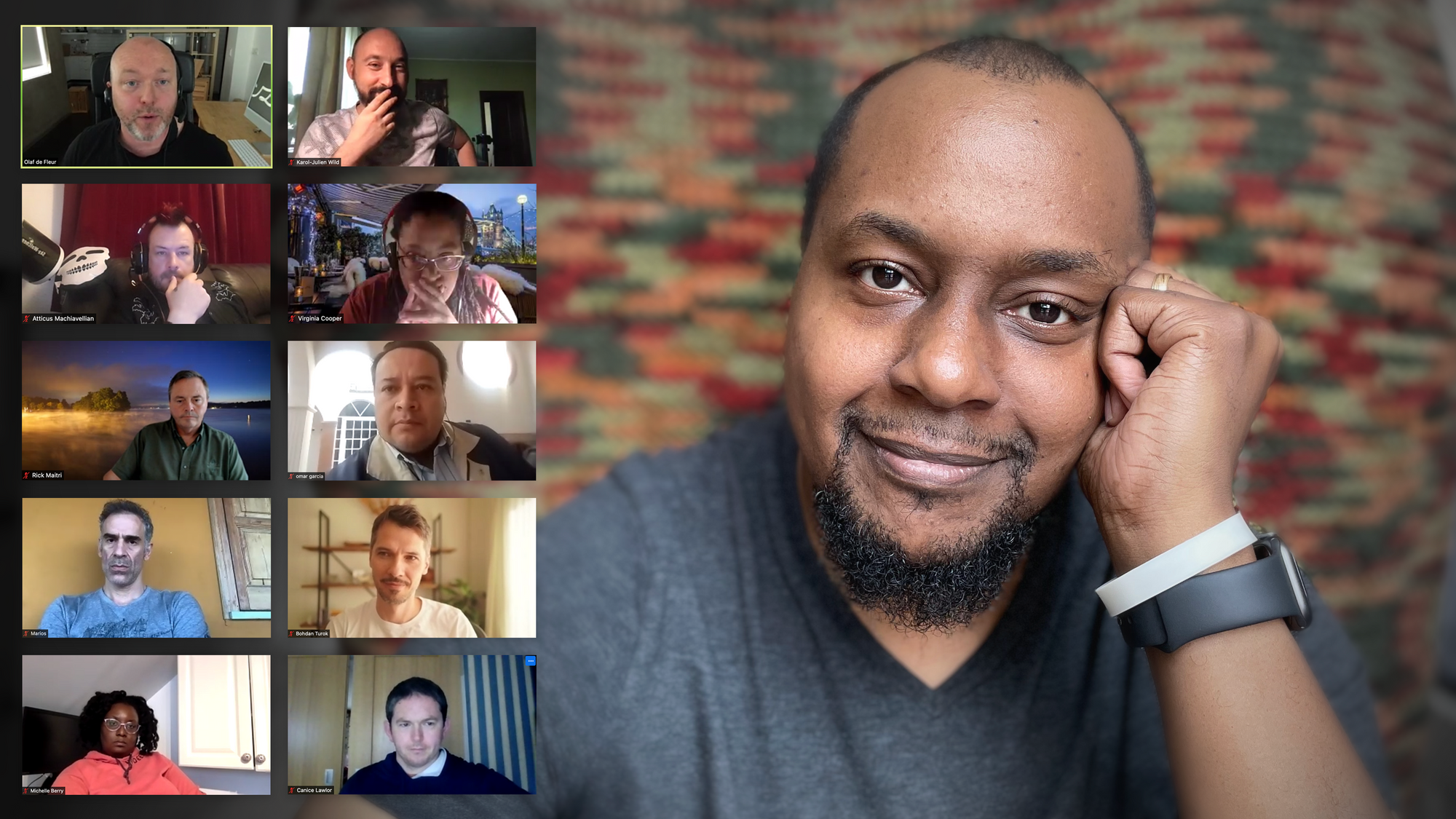Synopsis, metaphor, and negative self-talk
Ralston Vaz, a brand designer turned storyteller, gives us a feel for the topics explored, discussion flow, and open engagement style of one of Olaf’s Filmmaking Seminars.

Demystifying Filmmaking with Olaf de Fleur
Welcome to a time of wonder and wander, as visual storytellers think and move through topics of creativity led by filmmaker Olaf de Fleur. I’m Ralston, a brand designer in Washington, DC navigating a career transition into filmmaking.
I’ve fondly developed brand identities, product experiences, and story strategies for 20 years before admitting something to myself: I’m insatiably curious about the craft of telling unforgettable stories with film. That began a journey which recently led me to discover Olaf’s filmmaking classes on Skillshare. When I got news that he was hosting free film webinars to help new creators like me demystify filmmaking, I had to join.
A few weeks ago, in the second Saturday session Olaf hosted, our group openly and fluidly discussed three great topics: the challenges of crafting a synopsis, the power of a good metaphor, and what to do with negative self-talk.
Condensing a great idea into a summary of its major parts can be mentally laborious, even for experienced filmmakers. It’s about clearly communicating what your story is essentially about and how it will be told. That’s hard to convey about your own, beloved work.
Olaf reminded the group that it’s good to draft very rough or, perhaps, unflinchingly bad versions of the synopsis. Getting the words out of our heads without judgement allows us to see what’s working, what’s missing, and how to best say what needs to be said. The synopsis is the diamond of your idea. It’s very valuable to those who can help fund your project, and to collaborators who need to visualize your concept. And, just like a diamond, you should expect your synopsis to form over time and with the right conditions.
And there’s the power of a good metaphor!
More than merely a figure of speech or colorful phrase, Olaf helped the group see how a metaphor can offer layers of meaning. Like a nesting doll, the right metaphor can reveal information hidden beneath the surface in such a way that invites engagement and continuous searching. A Metaphor is a great tool for storytelling and helping an audience understand a story. As with an unassuming matryoshka doll, the best metaphors are small, agile, and portable. They contain much, but are easy to pick up quickly and take with you.
As creators, it can be easy to hear and give our attention to the doubts that speak up as we work, and the internal criticisms that invite themselves into our process.
That’s an important attribute which the group grew to appreciate as Olaf invited everyone to come up with their own metaphor to express what it’s like to write a synopsis. While the challenge made the importance of finding short, simple, and savory metaphors clear, the humbling struggle with the exercise also led the group’s conversation into another area of discussion: negative self-talk.
As creators, it can be easy to hear and give our attention to the doubts that speak up as we work, and the internal criticisms that invite themselves into our process. Thoughts of inadequacy, fears of failure, and voices of detractors distracting us from the simple tasks that move a good idea forward.
Jumping into MindNode, one of his favorite tools for thinking, Olaf led the group through an examination of negative self-talk and how to reduce its power.
Put simply, Olaf proposed that if we think of these thoughts and voices as just sounds, or noises, they lose their potency. He showed the group how reacting to negative thoughts often gives them power through validation. Olaf encouraged everyone to understand that we aren’t obligated to respond to negative self-talk. And when we encounter it, we can let the noise of negativity be a simple indicator for what’s actually true:
“I’m in unfamiliar territory. I’m afraid. And that’s OK. I’ll be OK. Let’s keep creating.”
In filmmaking – and life – so much of the process of creating compelling experiences is about keeping loose, appreciating the natural flow of things, and not attempting to dominate or rule our work. These conversations with fellow filmmakers, facilitated by Olaf, fluidly wander in and out of areas of discussion to find what we need to focus on for the moment. That experience is beneficial to everyone when everyone engages openly.

If you’d like to attend one of these sessions, we’d like to have you. Please be ready to share your voice (and face :^) with the group. Be open with your ideas and willing to help determine how the discussion moves. Because we need you, whoever you are, and we can’t wait to hear what you have to say.
